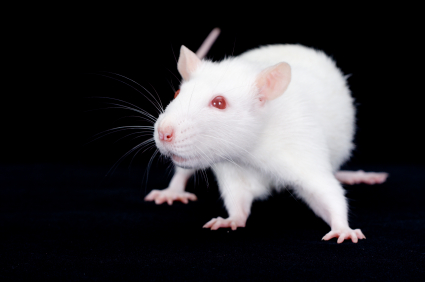Methamphetamine Kills Dopamine Neurons in the Midbrain of Mice
Epidemiological studies have linked methamphetamine use to risk of Parkinson’s disease, and animal studies of the illicit drug have shown that it harms dopamine neurons. A 2014 study by Sara Ares-Santos et al. in the journal Neuropsychopharmacology compared the effects of repeated low or medium doses to those of a single high dose on mice. Loss of dopaminergic terminals, where dopamine is released, was greatest after three injections of 10mg/kg given at three-hour intervals, followed by three injections of 5 mg/kg at three-hour intervals, and a one-time dose of 30mg/kg. All of the dosages produced similar rates of degeneration of dopamine neurons via necrosis (cell destruction) and apoptosis (cell suicide) in the substantia nigra pars compacta (the part of the brain that degenerates in Parkinson’s disease) and the striatum.
Statins Can Prevent Cardiovascular Risk in Patients with Mental Disorders
 People with major mental disorders such as schizophrenia and bipolar disorder are at increased risk for medical symptoms including overweight, obesity, high cholesterol or triglycerides, diabetes, and the metabolic syndrome, all of which increase risk of cardiovascular disease (heart attack), cerebrovascular disease (or strokes), and other medical difficulties. In a 2013 review article in the journal Bipolar Disorders, researcher Chittaranjan Andrade discussed the use of statins to prevent cardiovascular events in people with major mental disorders.
People with major mental disorders such as schizophrenia and bipolar disorder are at increased risk for medical symptoms including overweight, obesity, high cholesterol or triglycerides, diabetes, and the metabolic syndrome, all of which increase risk of cardiovascular disease (heart attack), cerebrovascular disease (or strokes), and other medical difficulties. In a 2013 review article in the journal Bipolar Disorders, researcher Chittaranjan Andrade discussed the use of statins to prevent cardiovascular events in people with major mental disorders.
Statins decrease lipids, and have significant benefits in decreasing cardiac events, but their use is low among psychiatric populations. Psychiatric patients often receive less cardiac care. It may be up to their psychiatrists to push for aggressive prevention of cardiac illnesses.
The most significant side effect of statins is the possibility that they can increase risk of diabetes. In a meta-analysis by Preiss et al., intensive dosing with statins increased the risk of diabetes but also lowered the risk of cardiovascular events. In a year, 1,000 patients would get two extra cases of diabetes but 6.5 fewer cases of cardiovascular events. For patients at high risk for heart attack or stroke, a cardiovascular event is more dangerous than diabetes, so it makes sense to treat these patients with statins. In patients at lower risk, there is some evidence that diabetes risk was a problem mostly in patients with other risk factors for diabetes, including metabolic syndrome, impaired fasting glucose levels, a body mass index of 30 kg/m2 or higher, or glycated haemoglobin A (1c) above 6%.
Most studies of statins are conducted on patients in middle age, but there is a rationale for treating even younger patients with statins. Patients with bipolar disorder develop cardiovascular disease more than a decade earlier than controls. There is some evidence that cholesterol deposits in arteries begin even before age 20, and are cumulative. The risk-benefit ratio for statin use improves with years of use, so starting it earlier may lead to better prevention. Long-term use may reduce the risk of Alzheimer’s disease and Parkinson’s disease and some cancers in addition to reducing heart attacks and strokes.
Despite the risk of diabetes, it is important to consider statin use in psychiatric patients, especially those who receive antipsychotic medications. Read more
Risk of Bipolar Disorder Associated with Enhanced Verbal Ability and Positive Social Traits
A recent twin study suggests that the genes that confer risk for bipolar disorder may also be associated with verbal ability and sociability. Considerable evidence has suggested that people with bipolar disorder have greater intelligence and creativity than the normal population. Positive qualities like these may make people with bipolar disorder attractive mates, leading to the continued propagation of genes that promote bipolar disorder. (One might expect lower than normal rates of reproduction in people with bipolar disorder due to the difficulties the illness creates, as occurs with schizophrenia, but people with bipolar disorder have normal rates of reproduction, suggesting that any obstacles to mating are balanced by other particularly attractive qualities.)
Researchers led by Rachel G. Higier used a Swedish registry of twins to investigate whether people with bipolar disorder and their fraternal or identical twins without the illness have better verbal ability and sociability. Bipolar patients and their twins (who would be expected to have similar genetic and familial risks but without the negative impact of the illness and medications for it) were compared to patients with schizophrenia and their twins and normal controls. The well twins of bipolar patients scored higher on a scale of positive temperament than the bipolar patients, schizophrenia patients and their twins, and controls. The twins of bipolar patients also scored better than schizophrenia patients and their twins and controls on tests of verbal learning and fluency, while the bipolar patients showed lower levels of cognitive function (likely due to their illness).
The researchers conclude that the genes that put families at risk for bipolar disorder also confer positive traits like verbal ability and positive temperament that make people with bipolar disorder attractive mates. Even though bipolar disorder may reduce these traits somewhat, people with the illness still are more creative than the general population and often very successful.



